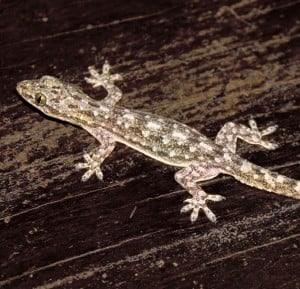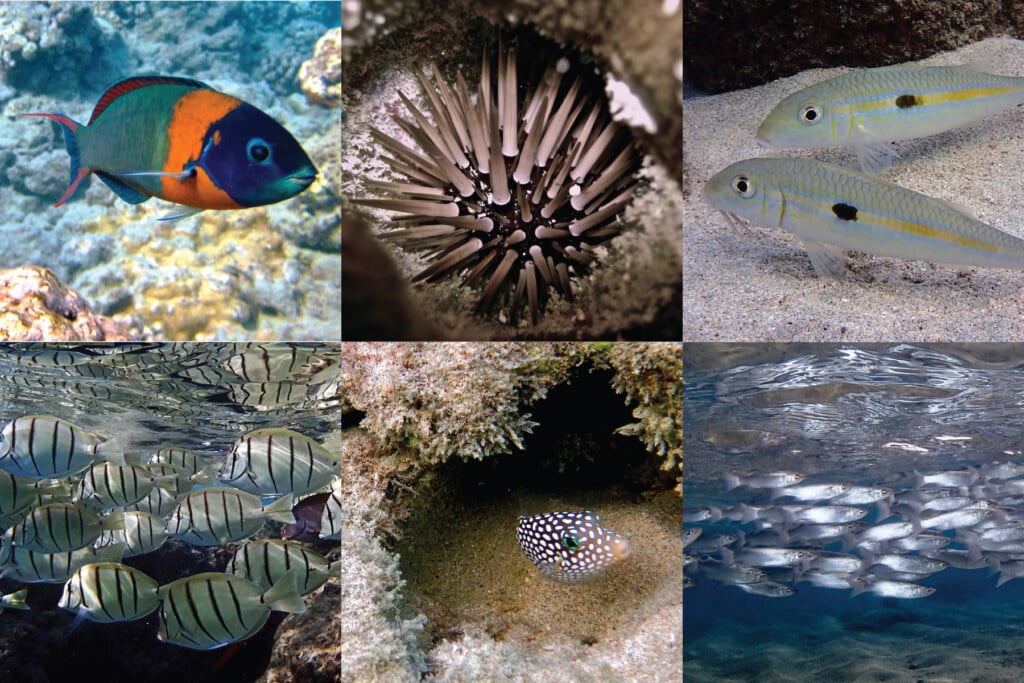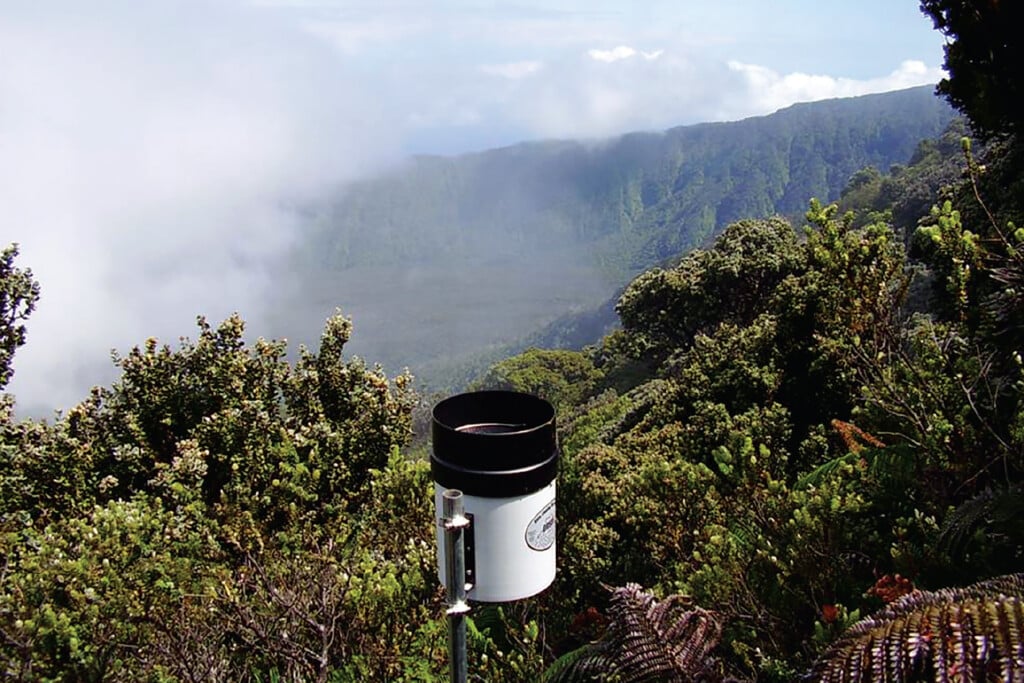Hawaiʻi’s Geckos Play a Positive Role in Your Home
Many eat cockroaches and ants, while others dine on spiders and centipedes. Though you may see your home as yours, geckos see it otherwise. They are often highly territorial and usually claim a part of your house as their own.
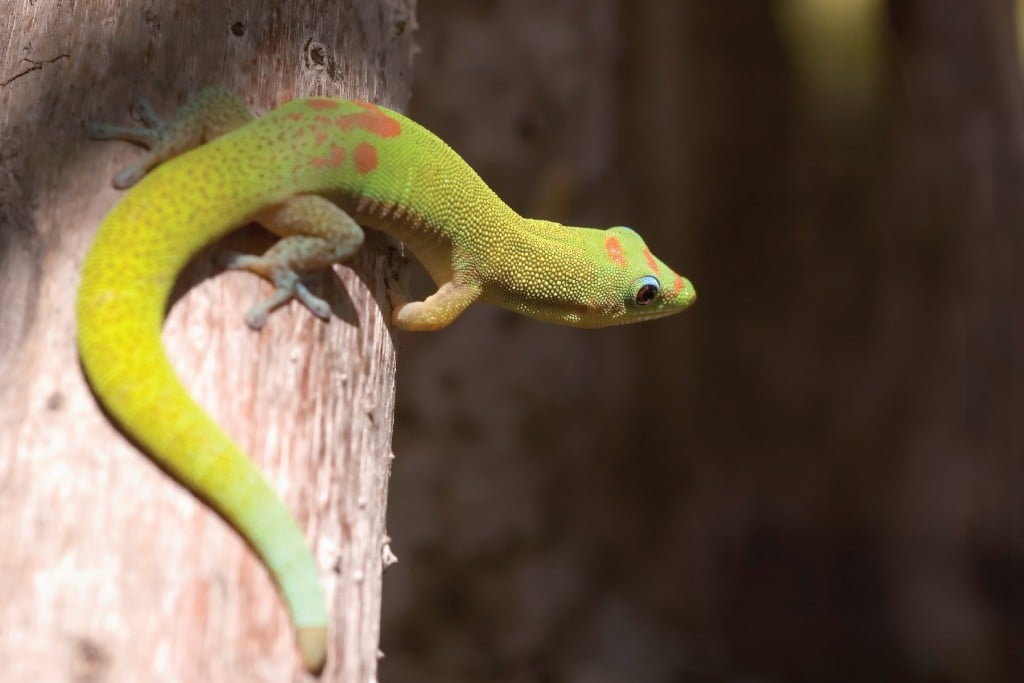
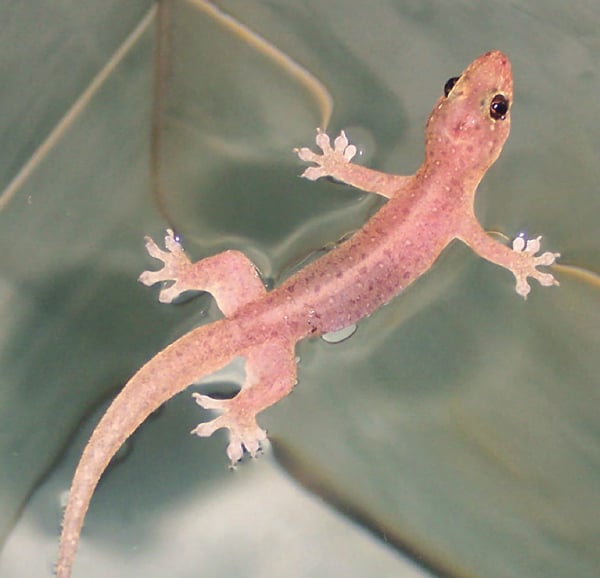
Stump-Toed Gecko (Gehyra mutilata)
Yes, that is a gecko on your coffee mug. And on your bathroom wall, above your computer and just about everywhere else in your home. Why do they feel so at home in your home?
Eight gecko species are found in Hawai‘i, but none are native to the Islands. Most of the eight have colorful names: the mourning gecko (yes mourning, not morning), stump-toed gecko, fox gecko, common house gecko, orange-spotted day gecko, giant day gecko, gold dusted day gecko and the Indo-
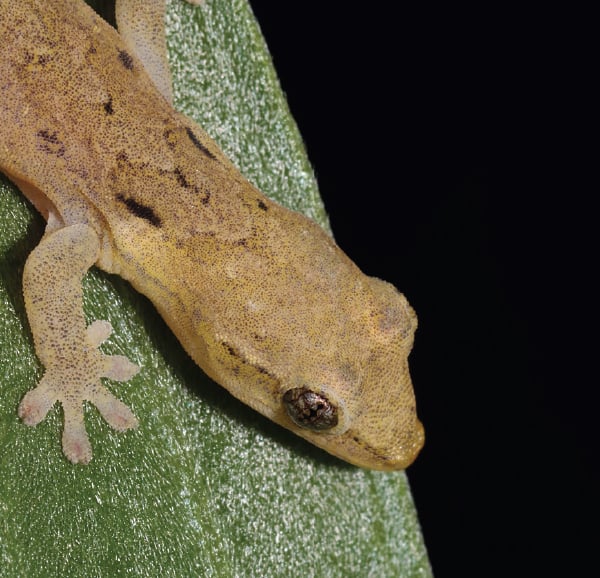
Mourning Gecko (Lepidodactylus lugubris)
Pacific tree gecko. Another species, the tokay gecko, was once found on the Windward side of O’ahu, though there have not been any recent local sightings.
Geckos are one of the few animal species known as commensal, meaning they can live together with people without harm, even in urban and suburban settings, says Allen Allison, head of the Natural Sciences Department at Bishop Museum.
“Most species are not able to do that. They just will not survive in these habitats,” Allison says.
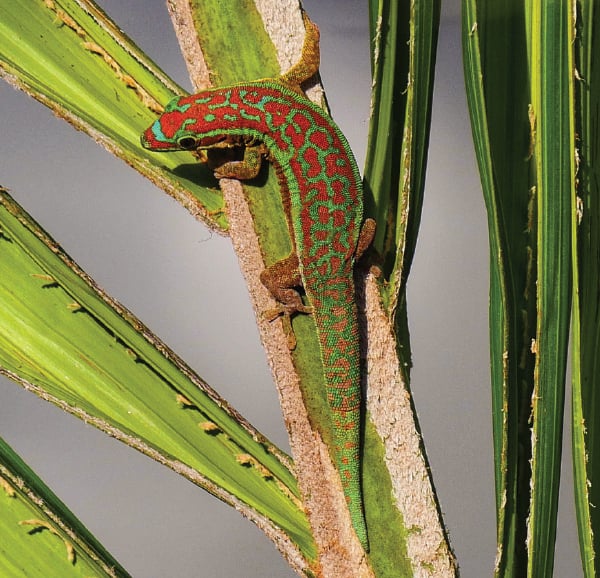
Orange Spotted Day Gecko (Phelsuma guimbeaui)
Though you may see your home as yours, geckos see it otherwise. They are often highly territorial and usually claim a part of your house as their own. Geckos will harass, fight or injure other geckos to claim what is theirs. If overpowered by another gecko, they will move elsewhere – maybe to your lānai or your neighbor’s living room.
The mourning gecko and fox gecko are the species most commonly found inside local homes. Both are all female species – whose eggs do not require fertilization – and make distinct clicking sounds to fend off other geckos, says Amber Wright, an associate professor in the School of Life Sciences at UH Mānoa.
“You will hear their clicking calls at night. This is to advertise and defend their territories,” she says.
These geckos often appear in unlikely places, like on a picture frame or a house plant. Your old high school yearbook might prove a suitable habitat for a fox gecko, and a vaulted ceiling might replace a natural tree canopy for a gold dusted day gecko.
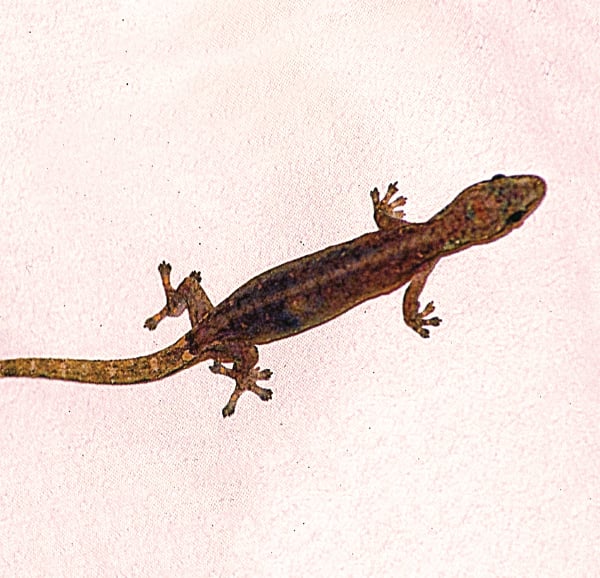
Indo-Pacific Tree Gecko (Hemiphyllodactylus typus)
A gecko’s toes are expanded at the tips, known as toe pads, which allow them to reach seemingly unreachable spots. The toe pads have ridges with microscopic hairlike structures that cling to any surface.
“All of those structures together result in a lot of surface area on the toe for chemical attraction forces to operate,” says Wright. Those chemical attractions are called Van der Waals forces and “that’s how the lizard adheres to surfaces,” she says.
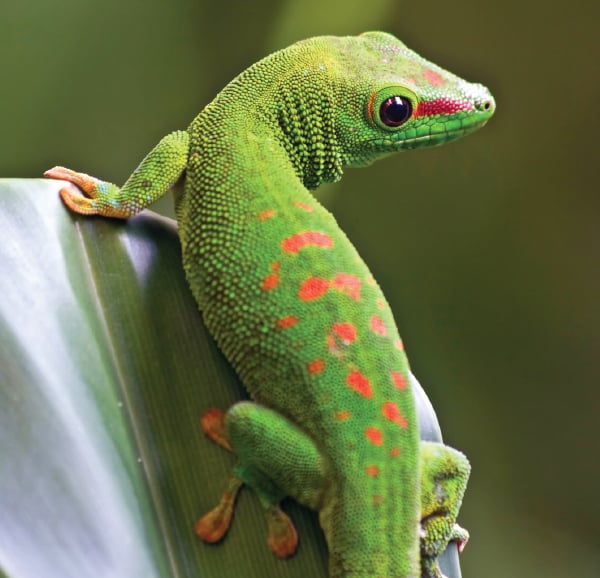
Giant Day Gecko (Phelsuma grandis)
This mechanism is the inspiration for many adhesive products in development today.
“These traits allow geckos to access arboreal habitats that other lizards can not reach. They
may be able to climb up to areas where they don’t have competition from other lizards for things like food,” Wright says.
Your house has its own food chains and geckos are links in those chains. Many geckos enjoy the taste of insects like cockroaches, flies and beetles, whereas other geckos enjoy spiders or
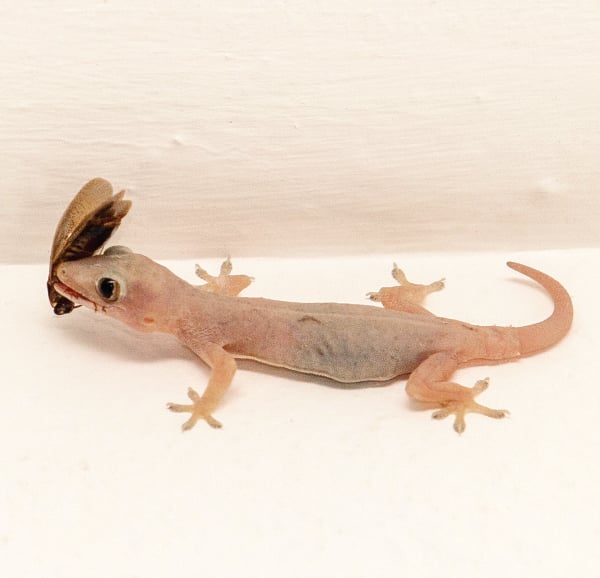
Common House Gecko (Hemidactylus frenatus)
centipedes. Each gecko’s metabolism is low, so individually they have little impact, but as a species, they can eat many unwelcome creatures in your house.
Without geckos, your household might have even more bugs; so instead of panicking next time you see one, ignore it. If you still want a gecko out, escort it to your front yard or a nearby plant. They do not carry COVID-19, Allison says, but perhaps use a glove or the gecko’s favorite mug to gently move it. After all, these creatures are your houseguests.
